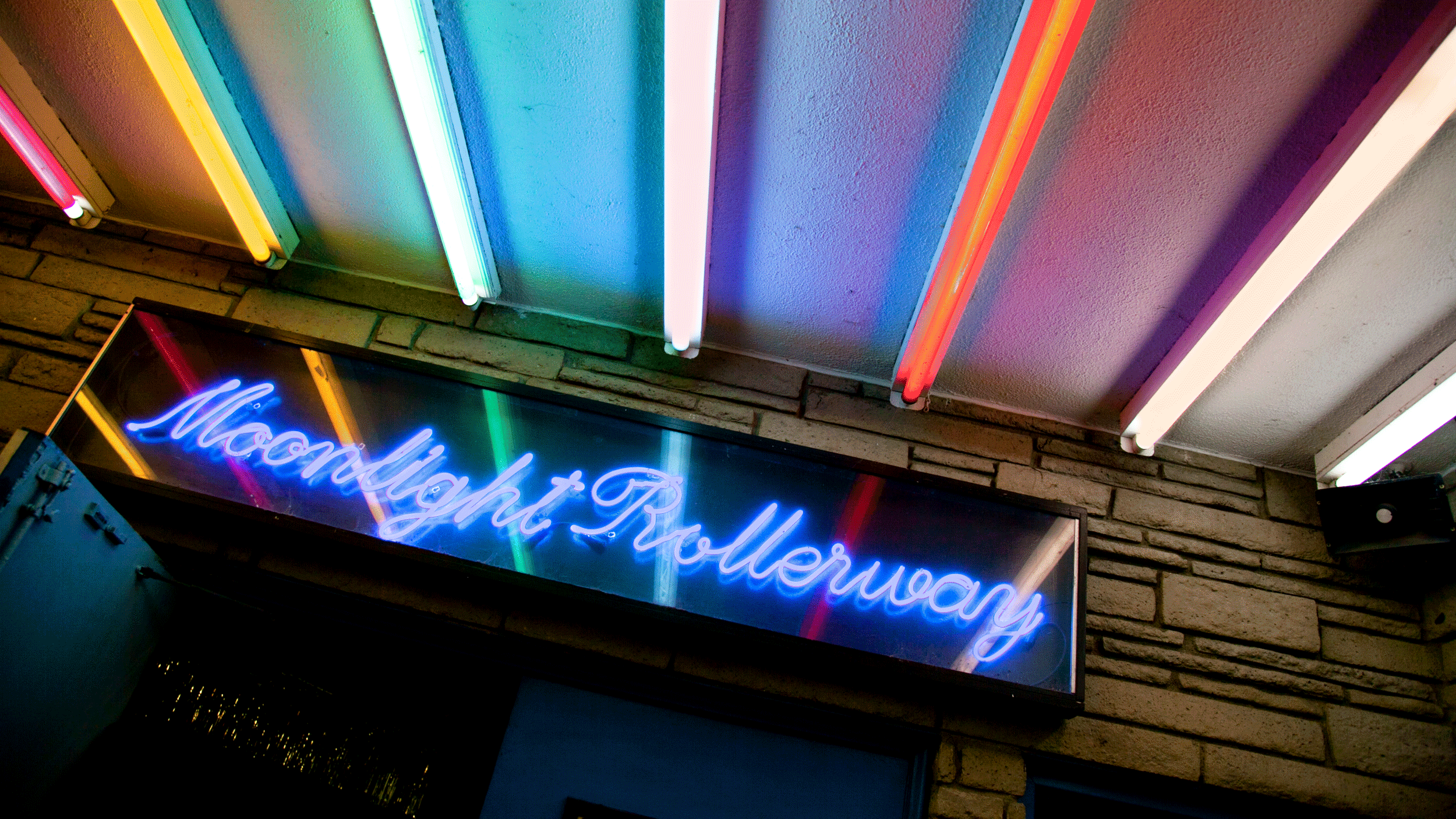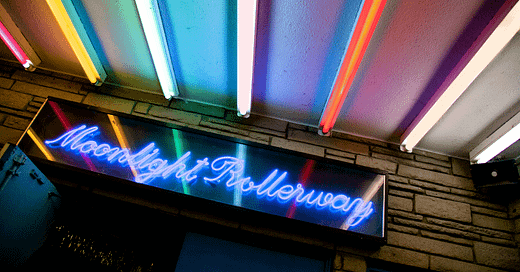Welcome to Moonlight Rollerway, Where Nothing Has Changed Since 1956
This California roller rink has held an Organ Night every Tuesday since Eisenhower. And the diehards are determined to keep waltzing and rexing until their legs won’t carry them any longer.

Photos by Lisa Whiteman
Every Tuesday night, Lillian Tomasino laces up her roller skates, puts her arms around her partner, and glides in sweeping circles across the floor of Moonlight Rollerway. Holding each other like ballroom dancers, she and Tom Clayton move effortlessly to the jaunty, classic tunes played live on a Hammond organ above the Glendale, California, rink. Despite the fact that she’s recently had spinal surgery, and that her bad knee keeps acting up, and that Tom, one of her regular skating partners, suffers from partial paralysis – Lillian is 86 years old, after all, and Tom’s 72 – they are among the most graceful skaters on the floor.
Moonlight Rollerway (formerly known as Harry’s Roller Rink) opened in 1956 and occupies a building that was originally built as a factory for aircraft parts during World War II. Although there are traces of the intervening decades – a disco ball, gold tinsel, a rainbow carpet from the 1980s, a digital photo booth – owner Dominic Cangelosi,…
Keep reading with a 7-day free trial
Subscribe to Narratively to keep reading this post and get 7 days of free access to the full post archives.



